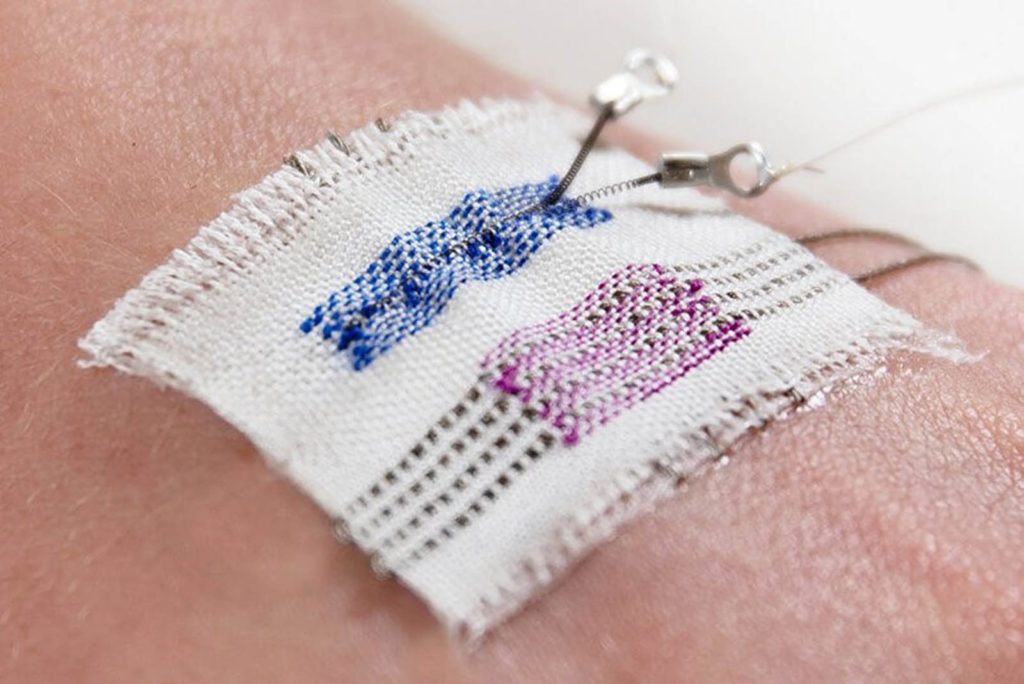
A design team at Cornell University’s Hybrid Body Lab have created “WovenSkin” on-skin interfaces (aka ‘smart tattoos’) that incorporate circuitry in their textile structure. This technique blends fiber art with new technology to advance the design, research and fabrication of on-skin interfaces, the team says.
Weaving as a craft possesses the structural, textural, aesthetic and cultural expressiveness for creating a diversity of soft, wearable forms that are capable of technological integration. In this project, the researchers extended the woven practice for crafting on-skin interfaces, exploring the potential to “weave a second skin.”
The weaving incorporates circuitry in the textile structure, which, when extended to on-skin interface fabrication, allows for electrical connections between layers while maintaining a slim form. Weaving also supports multi-materials integration in the structure itself, offering richer materiality for on-skin devices.
The researchers introduced a fabrication approach leveraging the skin-friendly material of PVA, which enables on-skin adherence, and a series of case studies illustrating the functional and design potential of the approach.
Team members include Ruojia Sun, Ryosuke Onese, Margaret Dunne, Andrea Ling, Amanda Denham. They were led by Prof. Cindy Hsin-Liu Kao. Their publication is titled, “Weaving a Second Skin: Exploring Opportunities for Crafting On-Skin Interfaces Through Weaving.”
 TEXTILES.ORG
TEXTILES.ORG


